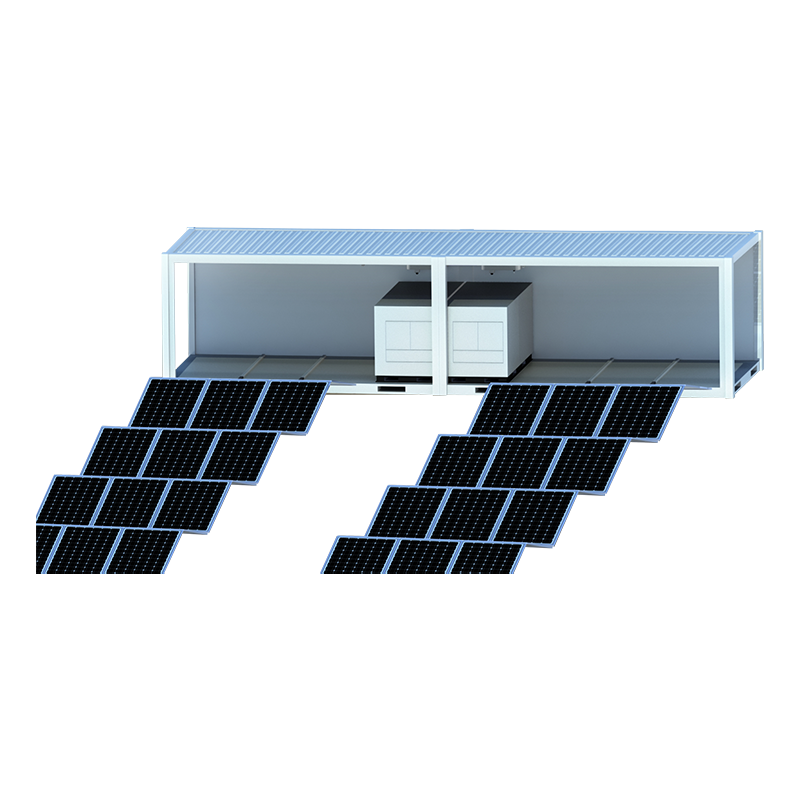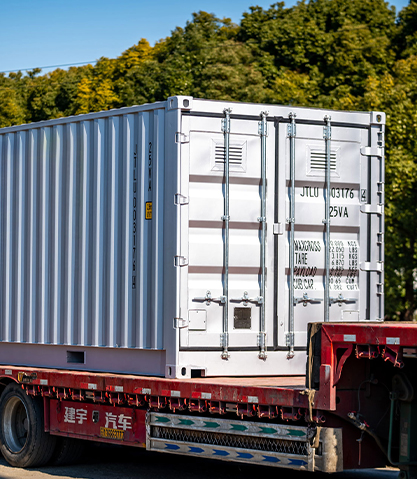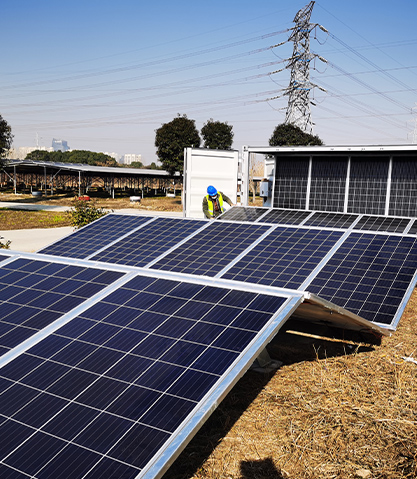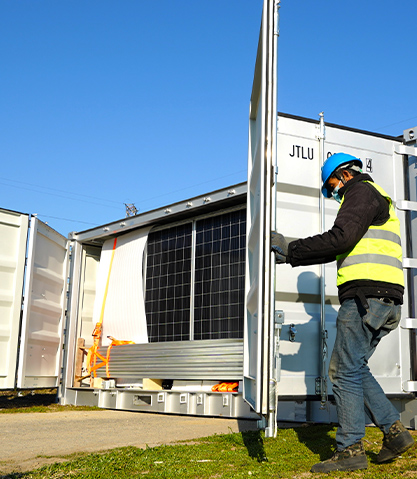In the global transition toward decentralized, renewable energy solutions, solar power containers have emerged as a transformative force — offering scalable, transportable, and rapidly deployable clean energy systems. These fully integrated units, housed within standard ISO shipping containers, combine photovoltaic (PV) arrays, battery storage, inverters, and control systems into a single, weather-resistant enclosure. Designed for versatility, they can be deployed in remote locations, disaster-stricken areas, military operations, or urban microgrids with minimal infrastructure requirements.
Unlike traditional solar farms that demand extensive land use and fixed installation, solar power containers represent a shift toward modular, plug-and-play energy generation. Their standardized form factor enables seamless integration into existing logistics networks, making them ideal for temporary deployments, off-grid applications, and emergency response scenarios.
This article explores the engineering principles, system components, operational advantages, and expanding applications of solar power containers, highlighting their growing role in shaping resilient, sustainable energy ecosystems.
Core Components and System Architecture
A solar power container is more than just a portable box with solar panels — it is a meticulously engineered energy hub, designed to operate independently or in conjunction with other units. Key subsystems include:
Photovoltaic Arrays : Foldable or retractable solar panels mounted on the container’s roof or integrated into external racks, often using monocrystalline silicon cells for high efficiency.
Battery Storage Units : Lithium-ion, lead-acid, or emerging solid-state batteries store surplus energy for use during nighttime or cloudy conditions.
Power Inversion and Management Systems : Convert DC power from solar panels and batteries into AC electricity suitable for residential, commercial, or industrial use.
Charge Controllers and Smart Monitoring : MPPT (Maximum Power Point Tracking) controllers optimize energy harvesting, while IoT-enabled monitoring allows for remote diagnostics and performance tracking.
Climate Control and Ventilation : Internal cooling and ventilation systems maintain optimal operating temperatures for sensitive electronics, especially in extreme environments.
Mounting and Transportability Features : Designed to withstand transportation by truck, rail, or ship, these containers are built to endure harsh conditions while remaining easily relocatable.
The modularity of this architecture allows for scalability — multiple units can be interconnected to create larger microgrids capable of supporting entire communities or industrial sites.
Engineering Principles Behind Container-Based Solar Systems
The design of a solar power container is rooted in the principles of modular engineering, system integration, and environmental resilience . Engineers must balance energy output, weight distribution, thermal management, and structural integrity to ensure reliable operation across diverse climates and terrains.
Key considerations include:
Energy Density Optimization : Maximizing power output per unit volume to meet mission-critical demands in limited space.
Load-Bearing Capacity : Ensuring the container structure can support rooftop solar installations, internal equipment, and stacking requirements during transport.
Weatherproofing and Durability : Constructed with corrosion-resistant materials and sealed enclosures to protect against dust, moisture, and temperature extremes.
Grid Independence and Off-Grid Compatibility : Configured for autonomous operation, with optional hybrid capabilities that allow integration with diesel generators or wind turbines.
Cybersecurity and Remote Access : Many modern units incorporate secure communication protocols to enable real-time data access and remote control via cloud-based platforms.
These design elements make solar power containers particularly valuable in environments where grid access is unreliable or nonexistent.
Operational Advantages Over Traditional Solar Installations
Compared to conventional solar farms or standalone PV systems, solar power containers offer several distinct benefits :
Rapid Deployment : Pre-assembled and factory-tested, these units can be deployed within hours, drastically reducing installation time and labor costs.
Mobility and Reusability : Easily transported and redeployed, they are ideal for temporary projects, humanitarian aid missions, or seasonal operations.
Reduced Land Use : Unlike large-scale solar farms, these containers require minimal ground footprint and do not necessitate permanent site alterations.
Plug-and-Play Integration : Designed for immediate operation upon arrival, they eliminate the need for complex on-site assembly.
Resilience in Harsh Conditions : Engineered to perform in extreme climates — from arid deserts to Arctic research stations — ensuring continuous power supply in chal
lenging environments.
Scalability and Interoperability : Multiple units can be linked together to scale capacity dynamically, forming localized microgrids tailored to specific energy needs.
These attributes position solar power containers as a key enabler of energy democratization — bringing clean electricity to underserved regions and critical facilities alike.
Applications Across Diverse Sectors
The adaptability of solar power containers has led to their adoption in a wide range of industries and settings:
1. Humanitarian Aid and Disaster Relief
Used by NGOs and government agencies to provide immediate power in refugee camps, field hospitals, and post-disaster recovery zones.
2. Military and Defense Operations
Deployed by armed forces for forward operating bases, surveillance systems, and mobile command centers requiring silent, fuel-independent power sources.
3. Remote Industrial Sites
Support mining, oil and gas, and construction operations located far from the electrical grid, reducing reliance on diesel generators.
4. Telecom and Communication Hubs
Ensure uninterrupted power supply for cellular towers, satellite uplinks, and rural internet infrastructure in off-grid locations.
5. Educational and Healthcare Facilities
Provide clean, consistent electricity for schools, clinics, and laboratories in developing regions where grid access is inconsistent or absent.

6. Urban Microgrids and Emergency Backup
Integrated into city infrastructure to support critical services during outages or peak load periods, enhancing grid resilience.
Each application underscores the flexibility and strategic value of solar power containers in addressing energy challenges across geographies and sectors.
Integration with Smart Grids and Renewable Ecosystems
As the energy landscape evolves toward decentralization and digitalization, solar power containers are increasingly being integrated into smart grid infrastructures and hybrid renewable systems :
Microgrid Aggregation : Multiple containers can be networked to form intelligent microgrids, managed through centralized control systems that optimize load distribution and energy storage.
Hybrid Power Solutions : Paired with wind turbines, hydrogen fuel cells, or diesel generators, these containers enhance energy reliability and redundancy.
AI-Driven Load Management : Artificial intelligence and machine learning algorithms predict energy consumption patterns and adjust generation and storage accordingly.
Remote Monitoring and Predictive Maintenance : Embedded sensors and cloud connectivity enable operators to monitor system health, detect faults early, and schedule maintenance remotely.
These integrations reflect a broader shift toward intelligent, adaptive energy systems — where solar power containers serve as both energy producers and digital nodes within a distributed network.
Environmental and Economic Impact
Beyond their technical capabilities, solar power containers contribute significantly to sustainability and cost-efficiency :
Carbon Footprint Reduction : By replacing diesel generators and fossil-fueled backup systems, they cut greenhouse gas emissions and air pollutants.
Fuel Cost Savings : Particularly valuable in remote locations where transporting diesel is expensive and logistically complex.
Waste Heat Utilization : Some advanced models incorporate thermal capture systems that repurpose excess heat for water heating or desalination.
Lifecycle Efficiency : Designed for long-term deployment with durable components and modular replacement strategies that extend system longevity.
For governments, businesses, and humanitarian organizations, investing in solar power containers represents both an economic and environmental win — reducing operational expenditures while advancing climate goals.
Challenges and Considerations in Deployment
Despite their many benefits, deploying solar power containers requires careful planning and consideration of several factors:
Initial Capital Investment : While lifecycle costs are favorable, upfront expenses can be a barrier, particularly for low-resource settings.
Solar Resource Availability : Performance is dependent on local irradiance levels, requiring location-specific assessments before deployment.
Security and Theft Prevention : Due to their mobility and high-value components, securing containers against theft or tampering is essential in some regions.
Maintenance Accessibility : In extremely remote or politically unstable areas, servicing and repair can present logistical challenges.
Regulatory Compliance : Meeting international standards for electrical safety, transport, and certification is crucial for cross-border deployment.
Addressing these concerns requires collaboration between manufacturers, policymakers, and end-users to ensure long-term success.
Innovations and Future Trends
Looking ahead, ongoing advancements are further enhancing the capabilities of solar power containers , pushing the boundaries of what modu

 English
English 中文简体
中文简体 عربى
عربى



